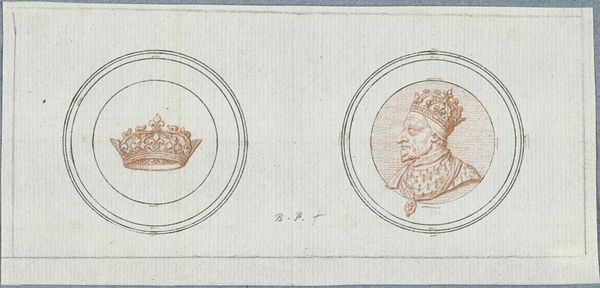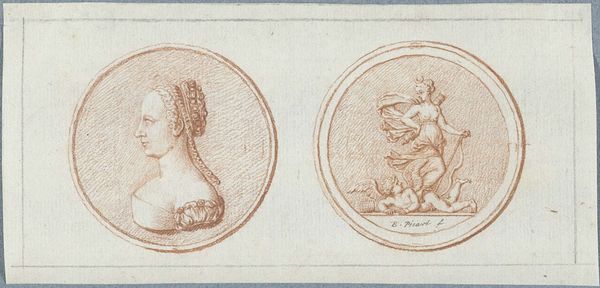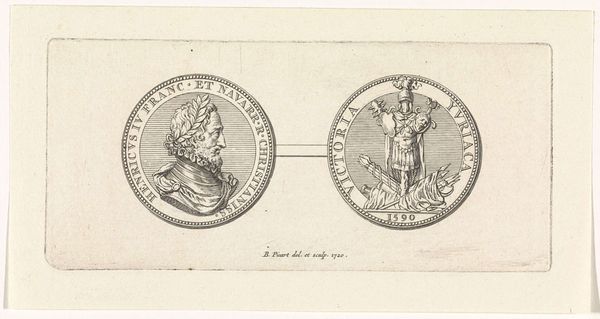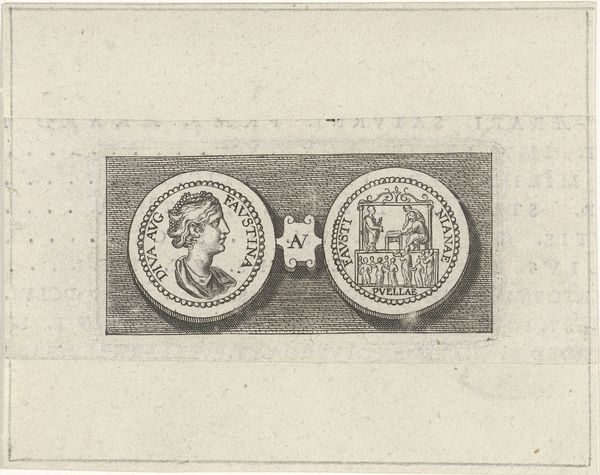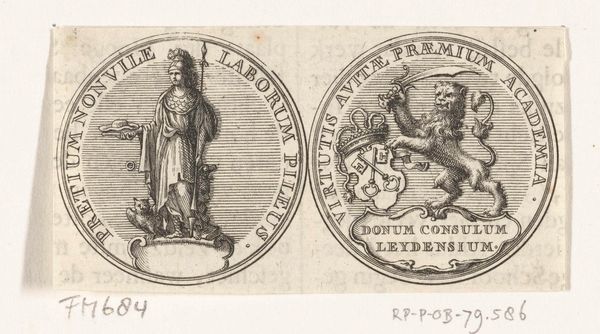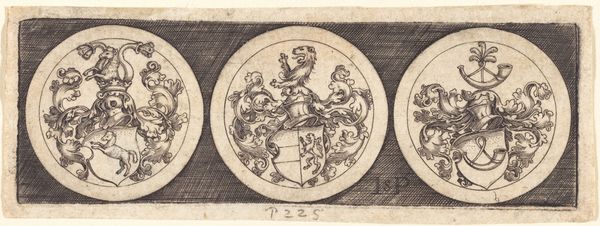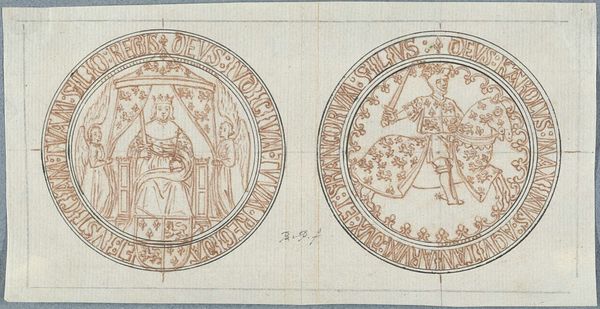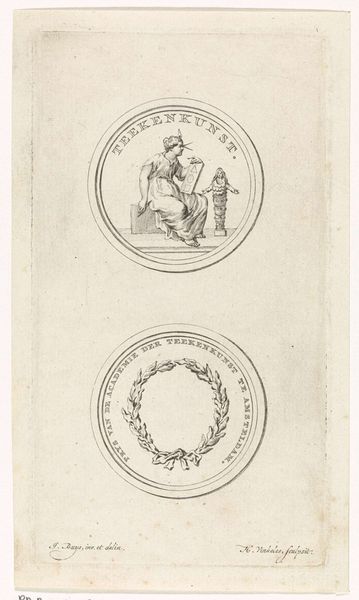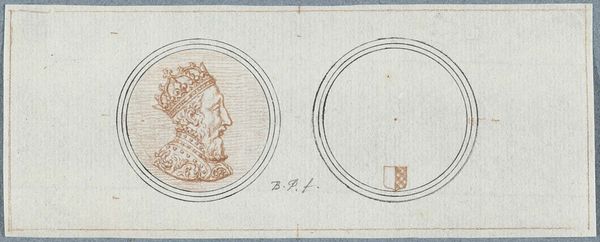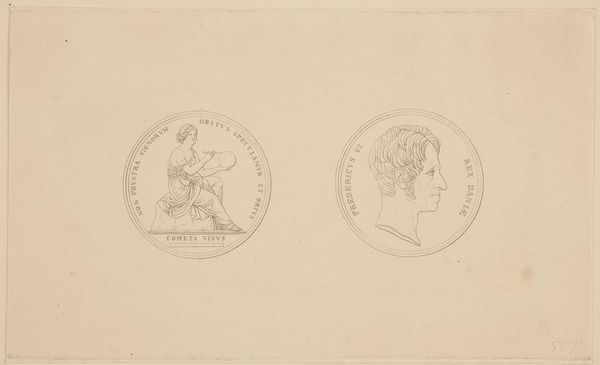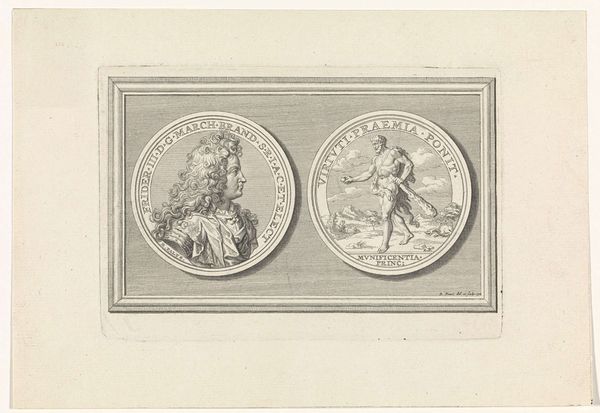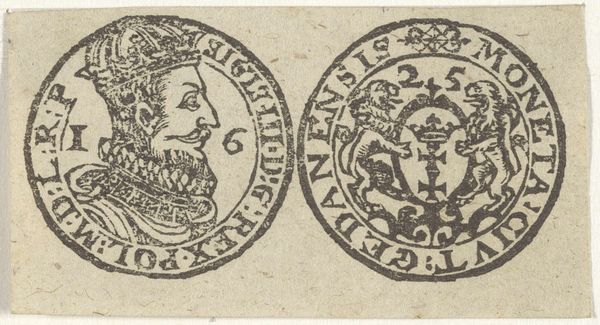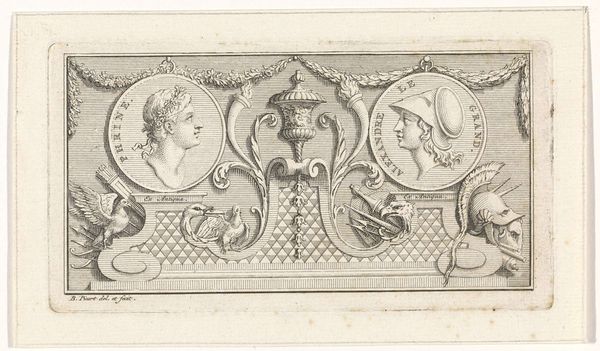
Voor- en achterzijde van een penning met het portret van Hendrik IV, op de overwinning bij Iprij 1683 - 1733
0:00
0:00
print, engraving
#
portrait
#
baroque
# print
#
ink colored
#
history-painting
#
engraving
Dimensions: height 69 mm, width 146 mm
Copyright: Rijks Museum: Open Domain
Curator: Here we have "Voor- en achterzijde van een penning met het portret van Hendrik IV, op de overwinning bij Iprij", or, "Obverse and reverse of a medal with the portrait of Henry IV, on the victory at Ypres" made sometime between 1683 and 1733. The print, rendered in ink, colored, and engraved, comes from the hand of Bernard Picart. Editor: What strikes me immediately is the meticulous rendering, especially given the scale of these miniature portraits. There's an almost neoclassical restraint in the color and line work, belying the Baroque period it hails from. Curator: Precisely! Observe the composition—two distinct circles, each containing a wealth of detail. On one side, a laurel-wreathed profile of Henry IV; on the other, an allegorical representation of victory. Editor: I'm intrigued by the back. The figure stands triumphant over what appears to be defeated enemies. How does this image play into the political narrative of Henry IV? Curator: This print, commemorating Henry IV's victory at Ypres, served as a potent symbol of royal power and divine right. Circulated widely, it bolstered the King's image but it was certainly also a signifier of early modern political marketing. The very material—a print made for mass production—speaks volumes about accessibility and the strategic dissemination of propaganda. Editor: Considering the semiotics, the laurel wreath functions as a prominent signifier of victory and imperial ambition. What about the figure with a shield on the back? What about all those limbs near the bottom of that image, that's kind of frightening. Curator: Indeed! In this context the print serves as more than a celebration; it becomes an articulation of national identity. The Baroque’s inherent dynamism is subdued here, filtered through the precision and logic of the print medium to convey the power and perceived stability of Henry IV's regime. The overall design feels very complete and structured in its narrative. Editor: A fascinating glimpse into the intersection of art and power, revealing how prints could serve as powerful tools for shaping public perception. Curator: It serves as a remarkable artifact of its time, one that provides a deeper comprehension of how artistic construction contributes to constructing narratives and molding socio-political beliefs.
Comments
No comments
Be the first to comment and join the conversation on the ultimate creative platform.
